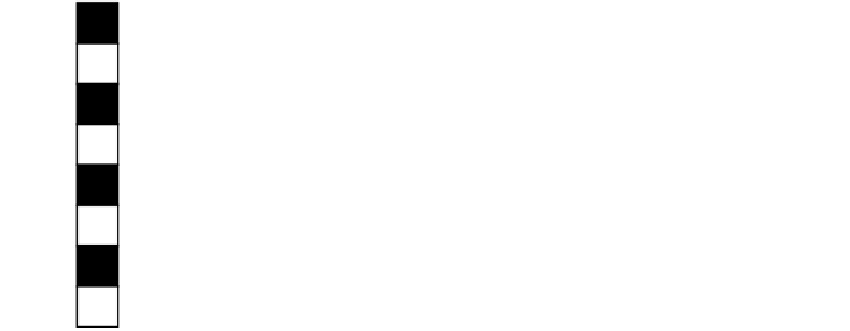Image Processing Reference
In-Depth Information
6.11.3
Early Dithering Algorithms
In the 1970s when the Apple 1 and II computers were introduced, one of their differ-
entiating features was the so-called “hi-res” graphics. We don't call 320
×
192 high resolu-
tion now that we have screen sizes of 2560
1920, but back then it was good enough that
scanned bit-map images of black and white photographs could be presented on screen.
The early compression technique developed for still images is important because it
was the forerunner of the way we do video compression today.
The trick was to dice the image into small squares and look for similarity across the
image. Then the image was reconstructed from a set of tiles that were stored in a more
compact form to take advantage of duplication within the image. While generating the
tiling, some smoothing effects were applied to distribute the dots evenly. This imparted a
very pleasing quality to the images.
×
6.11.4
Simple Checkerboard Dithering
During the 1980s a lot of work was being done to move color printing forward so as to
make color proofing available, and at that time a variety of different ink technologies were
developed. Most of them could only deposit a very restricted number of colors. There was
no intensity control—the colors were either on or off. Even with a four-color ink system
this only yielded 16 solid colors, and half of those were unusable because they were alter-
native versions of black.
The resolution of the printer was sufficient that by using half-toning techniques,
other intermediate colors could be realized. A checkerboard of red and yellow pixels
yields an orange color. Figure 6-11 shows two checkerboard-patterned examples.
This works for some images but not all, and you get some weird artifacts around the
edges of the colored shapes where the checkerboards don't mesh particularly well. Some
patterns create the same color in two different ways, so there were ingenious phasing
Figure 6-11
Simple checker dithering.

















Search WWH ::

Custom Search